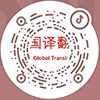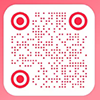Specific Solutions
What Is Localization Translation|An Overview by Elite Translation
As more businesses expand internationally, content and products are no longer created solely for one market. In this global context, traditional translation is no longer sufficient to ensure effective communication. This is where localization translation becomes essential.
Localization is not just about converting words from one language to another. It is a comprehensive process that adapts content to meet the cultural, linguistic, regulatory, and user expectations of a specific region. The ultimate goal of localization is to make your content feel native and relevant—so that your audience perceives it as created just for them.
Definition of Localization Translation
Localization translation is the process of adapting written, visual, and technical content from one language and culture to another while preserving its intended meaning and ensuring cultural appropriateness.
It goes beyond literal translation by considering audience preferences, local norms, and usage habits to deliver a message that resonates naturally with the target market.
Key Components of Localization
Language style adaptation: Adjusting tone, grammar, and sentence structure to match regional language norms. For example, American vs. British English, or informal vs. formal tone in Japanese or German.
Cultural customization: Modifying symbols, colors, holidays, gestures, or references that may carry different meanings across cultures.
Legal and compliance adaptation: Ensuring translated privacy policies, disclaimers, and user agreements comply with local laws such as GDPR, FDA guidelines, or regional advertising regulations.
Measurement and formatting: Converting currencies, weights, units, and date formats to local standards (e.g., kg to pounds, CNY to USD, or YYYY-MM-DD to MM/DD/YYYY).
UX and functional alignment: Adjusting layout, character length, and interface logic in websites, mobile apps, or software for better readability and usability in the local language.
Common Scenarios Requiring Localization
Website and software interface translation
International marketing campaigns and advertising slogans
E-commerce product pages, shipping policies, and payment instructions
Game content including dialogue, storyline, cultural references
Technical documentation and user manuals
Video subtitles, dubbing scripts, and multimedia content
Localization vs. Standard Translation
While standard translation focuses on accuracy and clarity, localization emphasizes usability, relatability, and cultural fit. In short:
A standard translation helps your audience understand what you mean.
A well-localized translation helps them feel that it was made for them.
How to Choose the Right Localization Provider
Native linguists and cultural consultants for each target market
Proven experience in relevant industries (e.g., technology, gaming, e-commerce, legal)
Ability to manage terminology databases and translation memory tools
Multi-format capability across documents, apps, video, and web content
Strong portfolio and client case studies demonstrating successful localization
Conclusion
In the era of global communication, language is not just a tool—it’s a gateway. Localization translation is the bridge that ensures your message not only crosses borders but also connects with people.
If you’re ready to take your product, brand, or content into new markets, Elite Translation offers industry-specific, culturally aware localization solutions that help you speak to the world—naturally and effectively.


















